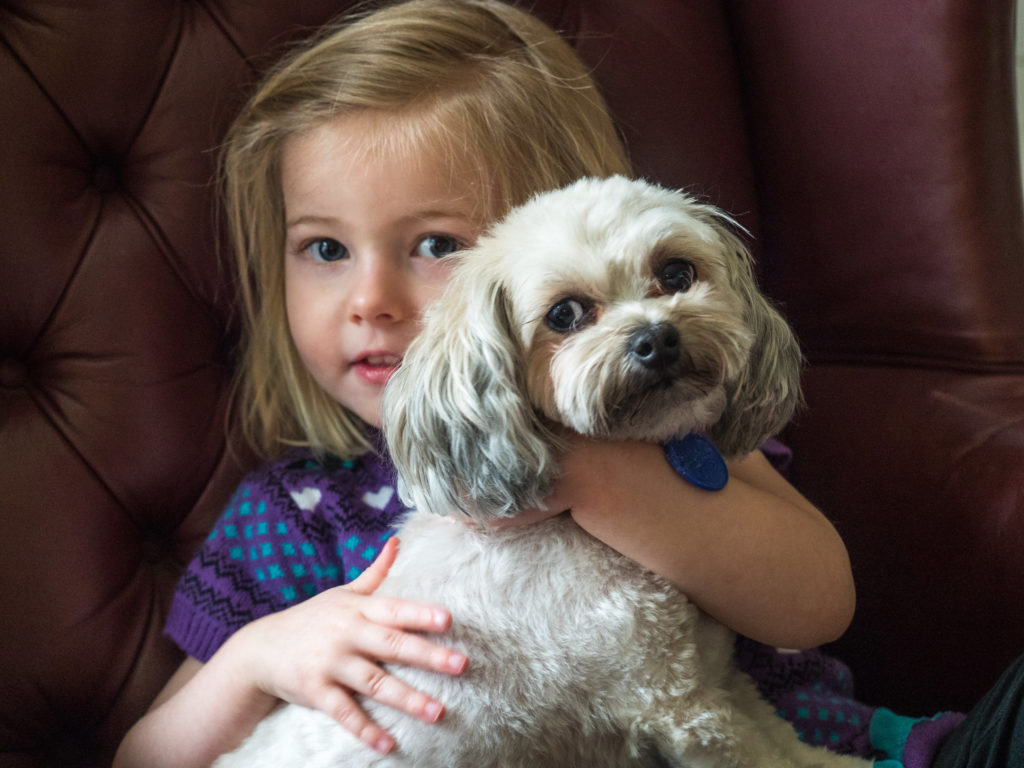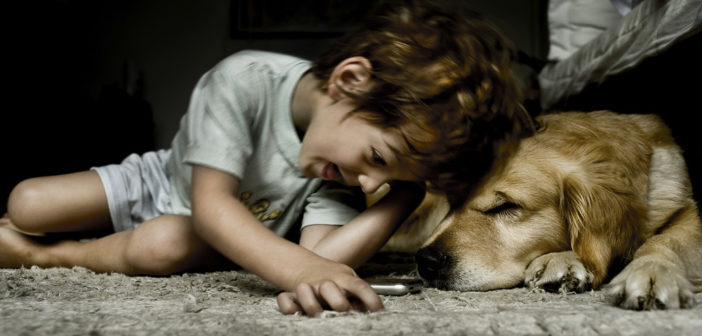The Animal Welfare Institute (AWI) endorses the Child and Animal Abuse Detection and Reporting Act, reintroduced in the United States this week by Representatives Ann McLane Kuster (D-NH) and John Katko (R-NY), along with 22 original cosponsors. This legislation would amend the Child Abuse Prevention and Treatment Act (CAPTA) to require that data collected by the federal government from state child protection agencies include information about animal abuse as a risk factor for child abuse. Weighing this additional factor can help identify opportunities to prevent both child and animal abuse or suggest when more specialized interventions are needed. The bill was first introduced in the US House of Representatives in 2019, but was not taken up before the 116th Congress ended.
“In a violent household, companion animals are often victims of the same abusive behaviors that harm children, intimate partners, and vulnerable adults,” said Nancy Blaney, director of government affairs for AWI. Often, the first person to identify a child in a dangerous situation is a law enforcement officer responding to an animal cruelty call.”
“Pandemic-related challenges, such as job losses and parenting stress, can significantly increase the risk of violence in the home,” Blaney added. “There is an urgent need for more comprehensive information about these patterns so that social service providers can understand how to intervene safely and effectively.”
As authorized by CAPTA in 1988, the Department of Health and Human Services established the National Child Abuse and Neglect Data System (NCANDS) to compile information from states about the nearly 700,000 American children abused annually. Case reports in NCANDS include a variety of details, such as the type of abuse a child suffered or whether the caregiver had a substance abuse disorder, that help researchers and service providers better understand the factors associated with child abuse. Animal abuse is one well-established factor, however, that is not considered under current law.

Information collected under NCANDS has been used to determine, for example, that children whose families face multiple stressors are at a higher risk of being repeatedly referred to child protective services, and that some types of mistreatment are more likely to recur than others. By tracking child abuse cases related to animal abuse as provided for under the Child and Animal Abuse Detection and Reporting Act, NCANDS would offer another valuable tool to prioritize prevention and intervention.
“As a mother and animal lover, I am deeply disturbed by the degree to which child and animal abuse co-occurs,” said Kuster. “Our government must do more to protect both our children and animals. I am proud to reintroduce this legislation that will direct the Department of Health and Human Services (HHS) to gather data and analyze cases where both kids and pets are abused. Having this information will enhance our understanding of these abhorrent behaviors and provide a better foundation for screening, prevention, and treatment programs. I encourage my colleagues to advance this important legislation.”
“There is an unfortunate correlation between animal and child abuse, with perpetrators often engaging in both of these heinous acts,” Katko said. “Animals and children do not deserve to be mistreated, and we have a responsibility to do a better job tracking the behaviors of abusers. This bipartisan legislation does that, by directing the Department of Health and Human Services to study cases where both of these abuses occur. Doing so will help protect children and animals from future abuse.”
Kuster and Katko, along with 12 cosigners, have also asked the House Education and Labor Committee to add the provisions of their bill to the reauthorization of the Child Abuse Prevention and Treatment Act, which the committee will take up this year.
Featured image: a child and a dog. Image credit CIA DE FOTO, CC BY-SA 2.0.





